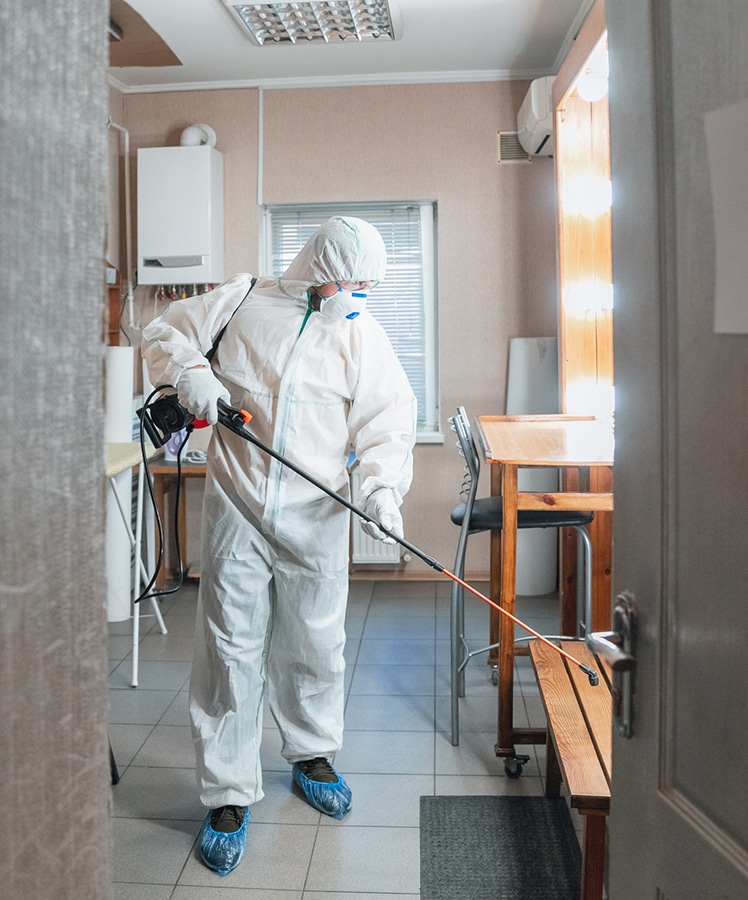Your Overview to Effective Asbestos Evaluating Treatments
Asbestos testing treatments are a vital part of ensuring the safety and security of indoor settings, especially in older structures where this unsafe material may be existing. The possible health dangers linked with asbestos direct exposure make it crucial to approach testing with precision and thoroughness.
Comprehending Asbestos and Its Threats
Asbestos, a naturally happening mineral recognized for its heat resistance and sturdiness, postures extreme wellness risks when its fibers are inhaled or ingested. asbestos inspection. Direct exposure to asbestos can bring about serious health conditions such as lung asbestosis, cancer cells, and mesothelioma cancer. In spite of its helpful homes, asbestos has been commonly banned in numerous countries as a result of the tried and tested web link between asbestos exposure and these deadly diseases
The threat hinges on the tiny fibers that can quickly end up being airborne when asbestos-containing products are disrupted or damaged. When inhaled, these fibers can come to be lodged in the lungs, causing inflammation and scarring with time. The latency duration between exposure to asbestos and the growth of associated diseases can extend a number of decades, making very early detection and prevention crucial.
Asbestos was typically used in building and construction products, insulation, and automobile components before its health threats were completely recognized. Today, appropriate testing and elimination of asbestos-containing materials are vital to shield individuals from the threats related to asbestos direct exposure.
Identifying Possible Asbestos Materials
The identification of possible asbestos products is a vital action in guaranteeing the security of people exposed to harmful substances in different environments. Asbestos can be found in a vast array of structure materials, consisting of but not limited to insulation, ceiling floor tiles, flooring tiles, concrete sheets, and roof covering tiles - asbestos survey. Identifying these materials precisely is important to successfully taking care of the threats associated with asbestos exposure

In situations where visual assessment is inconclusive, samples of believed materials can be collected and sent to recognized laboratories for testing. These research laboratories employ specialized techniques such as polarized light microscopy or transmission electron microscopy to accurately establish the presence of asbestos fibers in the examples. By following rigorous identification procedures, people can efficiently minimize the dangers connected with asbestos exposure.
Selecting the Right Testing Technique
Identification of prospective asbestos materials plays a critical role in determining the ideal screening approach for exact asbestos fiber discovery. As soon as suspected materials have been determined, choosing the best testing approach is necessary to guarantee reputable outcomes. There are two main techniques for asbestos screening: polarized light microscopy (PLM) and transmission electron microscopy (TEM) PLM is frequently made use of for first screening as it is affordable and provides fast outcomes. Nonetheless, PLM has limitations in detecting asbestos fibers that are smaller than 1 to 3 microns. On the various other hand, TEM is an advanced look at this now method that can precisely determine asbestos fibers at the ultrastructural level. While TEM is much more costly and taxing than PLM, it provides greater sensitivity and uniqueness in asbestos detection. Choosing the appropriate screening method depends on different factors such as the sort of product being evaluated, the needed level of sensitivity of the analysis, and the offered budget. It is vital to speak with accredited asbestos screening specialists to determine the most ideal approach for your specific screening requirements.
Carrying Out Example Collection Safely
When gathering samples for asbestos testing, prioritizing safety steps is critical to lessen potential exposure dangers. Asbestos fibers are hazardous when disrupted, making it important to comply with proper safety protocols during example collection - Asbestos Air Sampling. Before starting the sampling process, make certain that you are outfitted with personal protective devices (PPE) such as disposable coveralls, gloves, safety glasses, and masks to avoid breathing or contact with asbestos fibers
It is important to damp the tasting location utilizing a mild mist of water to avoid the fibers from ending up being airborne throughout collection. Usage caution when gathering samples and avoid hostile scraping or piercing that can release asbestos fibers into the air. Instead, carefully reduced a small piece of the product using appropriate tools and position it right into a secured container for evaluation by a certified laboratory.
Moreover, classifying each sample with detailed info concerning the sampling location, date, and enthusiast's name is vital for accurate record-keeping and analysis. By following these safety and security guidelines, you can conduct sample collection for asbestos testing efficiently while web decreasing the danger of direct exposure.
Analyzing Test Outcomes and Following Actions

Final Thought
In final thought, efficient asbestos screening treatments are necessary in recognizing and managing potential wellness risks linked with asbestos direct exposure. By recognizing the risks of asbestos, determining potential materials, picking the ideal screening method, carrying out sample collection safely, and translating test results accurately, people and companies can take the necessary actions to secure themselves and others from the unsafe results of asbestos. It is vital to focus on safety and security and proper testing protocols to guarantee a healthy setting for all.

Recognition of potential asbestos materials plays a crucial role in figuring out the ideal testing method for exact asbestos fiber discovery. The test outcomes will certainly suggest the visibility or lack of asbestos, the type of asbestos fibers existing, and the focus levels.In conclusion, reliable asbestos screening treatments are necessary in determining and handling possible wellness risks connected with asbestos exposure. By understanding the dangers of asbestos, recognizing possible materials, choosing the ideal screening technique, conducting example collection safely, and interpreting examination results precisely, individuals and companies can take the necessary loose fill asbestos actions to protect themselves and others from the unsafe impacts of asbestos.